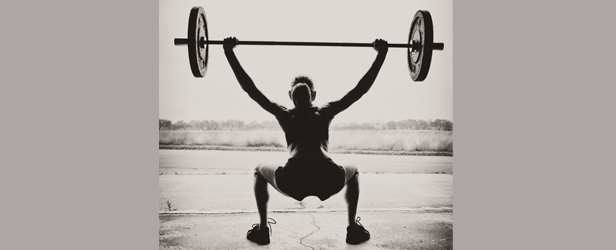
If you scour the internet for Olympic weightlifting, it won’t be long until you find videos of Klokov pressing huge weights for reps, or Xiaojun showing us how he trains his abs. Although these may seem like showreel videos used to engage an audience, there is a strong possibility that these are actually specific training days programmed by their coaches. Introducing the “Bullshit” day…
When I write up a program as a weightlifting coach, I have a selection of main exercises to choose from. These are the ones that will make gains in technique and strength for the lifts with the strongest carry over. These include exercises such as power and hang derivatives, block work, and pulls and squats, just to give you some examples. Towards the end of the session, I will usually program some unilateral work in order to remove any imbalances that may be present, or to prevent such things from occurring. A high percentage of the time it will mainly be single-leg work, although on occasion it will also be arms. Following this, if time permits, I will then get my guys doing a “bullshit-exercise.”
I use this term because I view it as something that is a bit…well, you know…bullshit! (Specifically in regards to carrying over into weightlifting). If I have a lifter who is weak in specific muscles or joints, or maybe has suffered a previous injury, then I will get him to do a traditional bodybuilder-style exercise. Triceps extensions and lateral raises may be used to help build shoulder joint strength, leg extensions and hamstring curls are used for knee support, muscle isolation is needed for strength and size gains, and calf raises are used to help reinforce the arch in the foot as well as strengthen the knee. However, none of these exercises will directly improve either the Snatch or the Clean and Jerk, nor will it pattern any good movement technique. Hence, why I call them “bullshit.”
This is not to say that I think bodybuilding is bullshit. On the contrary, I have quite the respect for the athletes competing in the world of bodybuilding. In fact, this whole article is based on the fact that weightlifters often neglect bodybuilding and, in turn, potentially lose those small but important gains.
So, you’ve flicked over to YouTube and there you find a video of Lu Xiaojun doing handstand push-ups with additional weight attached to him, or even dips with 100 kg strapped to his waist. Maybe you’ve seen the video of Klokov doing the CrossFit-style workout of Klokov Presses and behind-the-neck wide grip pull-ups for countless sets and no rest? Most of us just look at these videos and marvel at the ridiculous weights being used and the ease at which such an exercise is performed. But we never think to ourselves that this might actually be a part of a lifter's program and the reason behind why they are such great athletes!?
I’m quite the fan of a three- or four-day program for my lifters. None of them are international lifters and they all have jobs and/or college and lives to live. Therefore, what I do is program a three-day week of weightlifting-specific days, including all of the exercises I stated earlier (that have strong carryovers to weightlifting). Then, I program a fourth day that is simply a “bullshit” day. This day is good in many ways. For instance, it targets muscles that aren’t used that much in weightlifting and thus creates balance in the whole body. These days also increase muscular size and density which will, in the long run, add strength to the joint that the muscle crosses over and potentially prevent injury. Most crucially, however, these days allow you to work on the essential muscles in weightlifting and isolate them to become stronger.
Another positive effect of "bullshit" days is the variance they provide to training. Weightlifting is typically monotonous—the same exercises are performed day after day, week-in and week-out. So, by adding a bodybuilding day, you can keep your lifters' minds fresh and active. In addition to this, you can be a bit more lax on the programming to some degree. I make sure that all of my lifters write down everything they do, record how each set felt, and why they made any misses. Then, when our bodybuilding day comes around, they can work on their own weak area(s), as well as any other areas they may want to improve. As long as they are hitting all the key parts, and the coach is monitoring what they are doing, then this is only going to have positive effects. What's more, they usually enjoy these sessions, especially the guys!
This session can also be sold as active recovery. Olympic weightlifting is trained with loads of very high intensities. This is going to fatigue the CNS in no time at all without periods of rest. Bodybuilding, however, uses weights that are relatively light. (I should note at this point that I avoid squats on this day, or squat derivatives, as these would not typically be light). This way, CNS fatigue is very minor and the body is kept active for a speedy recovery.
The increasingly popular Cube Method in powerlifting includes this exact principle—three days of training the competition lifts and one day doing bodybuilding-style training.
Food for thought: why not include a day of bodybuilding into your Olympic lifting program?










1 Comment